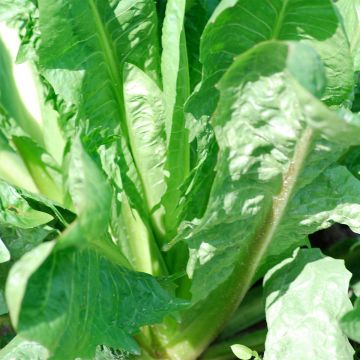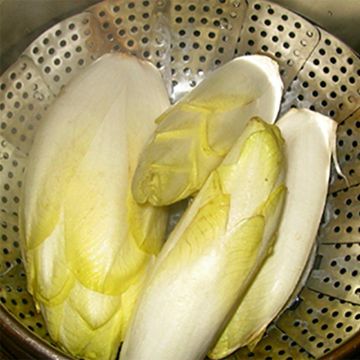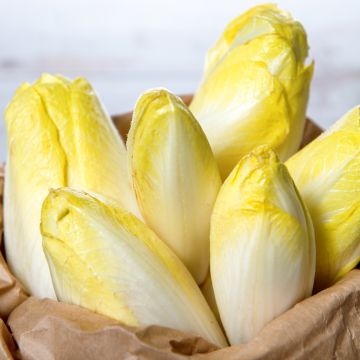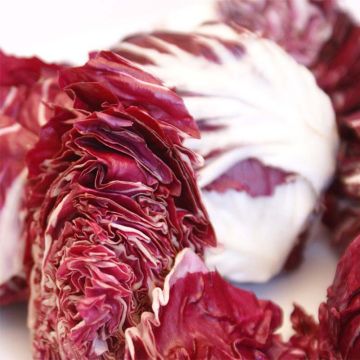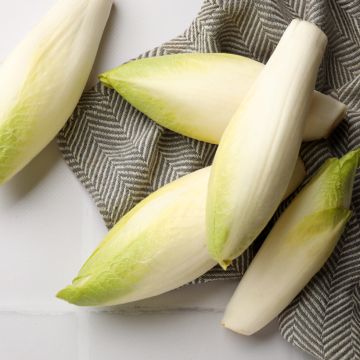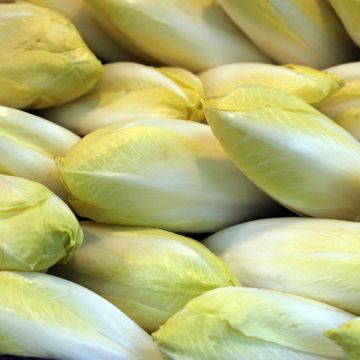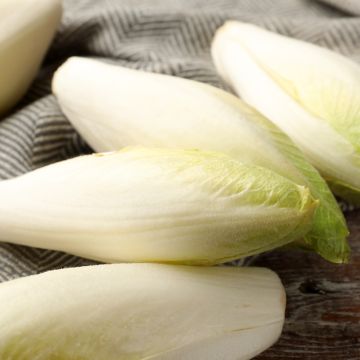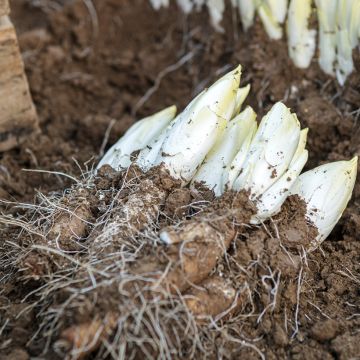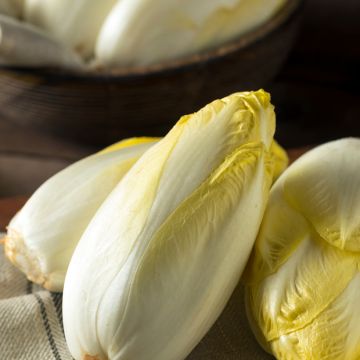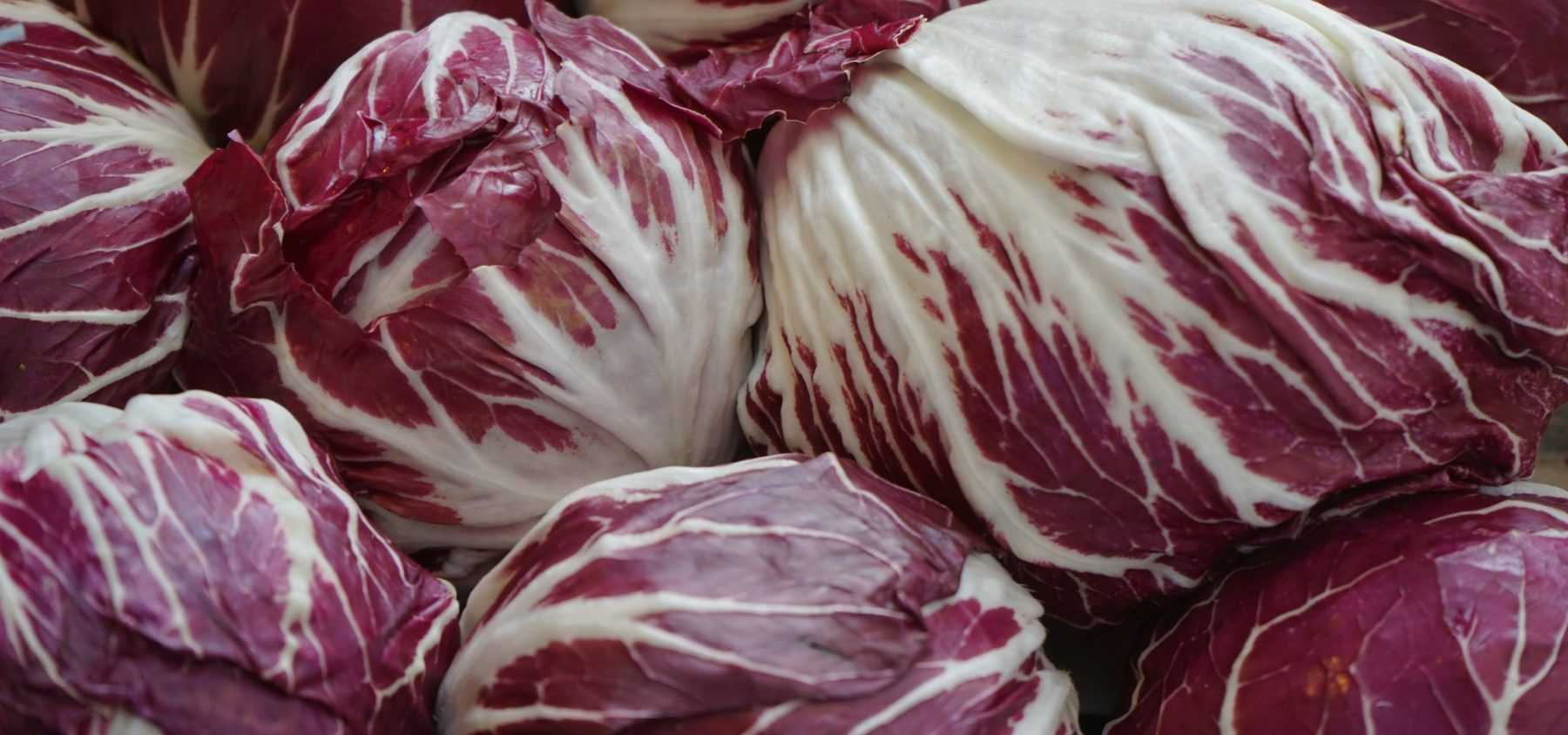
Growing Chicory Successfully and Blanching It
All our advice
Contents
Chicory is a leafy vegetable prized for its bitter flavour. It can be eaten raw in salads (chicory is often part of mesclun mixes, blends of young shoots from different salad varieties), but also cooked in gratins, with cream, braised… Discover all our tips for successfully growing chicory, from choosing the right variety to harvesting, including sowing, planting, care and blanching, which helps reduce its bitterness.
Which variety to choose?
There isn’t just one but several types of chicory, including:
- Curly endive (Frisée): Recognisable by its fine, deeply cut leaves, curly endive is often used in salads to add texture and crunch. Its leaves are more tender and less bitter than other chicory varieties. Popular cultivars include ‘Wallonne’, ‘Fine de Meaux’ and ‘Frisée de Ruffec’.
- Escarole: Escarole has broad, crisp leaves with a slightly bitter taste. It’s ideal for salads but also works well in cooked dishes. Popular varieties include ‘Cornet d’Anjou’, ‘Grosse Bouclée’ or ‘Géante Maraîchère’, prized for their cold resistance.
- Wild chicory: The hardiest variety, growing naturally in fields. It produces elongated, toothed leaves often used in salads. Some cultivars, like coffee chicory, are grown for their roots which – once roasted – can serve as a coffee substitute.
- Witloof chicory: This variety is cultivated to produce chicons (Belgian endives). After initial field cultivation, the roots are dug up and replanted in darkness to force the growth of chicons – crisp, pale buds. Their cultivation process is unique and covered in a dedicated guide.
Read also
Chicory: cultivation, benefits and usesWhere to plant chicory?
In the vegetable garden, chicories thrive in all rich, fresh and light soils, neutral or slightly acidic. Heavy clay soil can be improved by adding compost or sand to enhance drainage. They prefer a sunny position, though they can tolerate light shade. The more sun exposure they receive, the more productive the chicories will be. They are less susceptible to intense heat than lettuces.
Chicories are “good companions” and pair well with many vegetable plants. Their presence is particularly beneficial for rocket, lettuces, and beetroot.
Discover other Chicory
View all →Available in 1 sizes
Available in 2 sizes
Available in 1 sizes
Available in 1 sizes
Available in 1 sizes
Available in 1 sizes
Available in 1 sizes
Available in 1 sizes
Available in 1 sizes
Available in 1 sizes
When and how to sow chicory?
Sowing chicory takes place from mid-April to mid-August, but each variety has an ideal sowing period that should be respected. For this, refer to the instructions on the seed packet. Generally speaking, the optimal germination temperature is around 20°C.
Sowing can be done directly in open ground, but you can also start with seedlings that are later planted in the garden. When planting in the garden, be sure to respect the planting distances: chicory plants can be very large and need space to develop.
- In open ground: Sow directly in rows spaced 30 to 40 cm apart. Bury the seeds about 1 cm deep, then cover with fine soil.
- In a nursery: For varieties more sensitive to cold, such as curly endive, you can sow in a nursery and then transplant the young seedlings.
When the young plants have about 4 leaves, thin them out to leave only one plant every 20 cm. This operation gives more space to the remaining plants to develop properly.
When and how to plant chicory?
After sowing your chicory, you may need to transplant the young seedlings to ensure proper growth. Transplanting is typically done about 4 to 6 weeks after sowing, when the seedlings have 4 to 6 well-developed leaves. This is usually carried out in May or June for spring sowings.
Replant the young seedlings in open ground, spacing them 30 to 40 cm apart in all directions. Make sure the plant’s crown (the base of the leaves) remains at soil level, as planting too deeply may lead to rotting.
How to care for and blanch them?
Routine care for chicory involves regular weeding and hoeing, along with moderate but consistent watering. These tasks can be spaced out or significantly reduced if you mulch the soil with thin, successive layers of pre-dried grass clippings, ideally mixed with fallen leaves.
Chicories, particularly wild chicories, are known for their cold resistance. However, their hardiness has limits: it’s wise to protect them from harsh winter conditions with a cold frame, a Nantes tunnel, or simply with horticultural fleece or a thick mulch.
Blanching chicory involves depriving it of light to produce softer, less bitter leaves. This is done around ten days before harvest, using various methods:
- Cover the head with a terracotta pot or an opaque cloche,
- Tie the head with garden twine so the outer leaves shield the heart,
- Cover the chicory with an opaque plastic tunnel or, if grown under a cold frame, place plastic, cardboard, or straw mats over it.
Note that blanching chicory is optional—this step isn’t needed for naturally mild varieties or those that self-blanch.
What are the pests and diseases affecting chicory?
Chicories are often prey to slugs and snails. The most effective control method is the use of Ferramol. This slug killer is safe and approved for organic gardening. Anticipate by spreading the pellets two to three weeks before sowing or planting to get rid of them as early as possible.
Although hardy, chicories can nevertheless be affected by rot. This phenomenon is encouraged by humid weather, but also by confined conditions. To avoid this, do not water by sprinkling the chicory, respect planting distances and do not blanch them when frost is forecast.
When and how to harvest chicory?
It is simply done with a knife when the heart is white or when the apple is firm and dense. Act before any severe frost, but bear in mind that a light frost (or “hoar frost”) mellows the taste of chicories.
- Subscribe!
- Contents


































